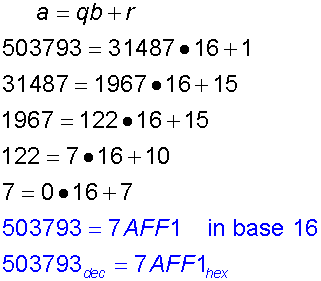The Division Algorithm
For all positive integers a and b,
where b ≠ 0,
![]()
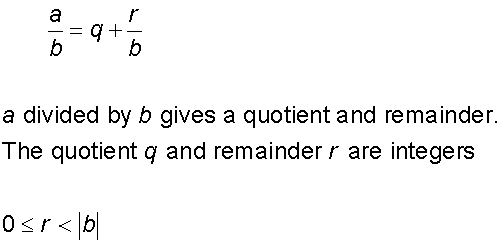
Example
Use the division algorithm to find
the quotient and remainder when
a = 158 and b = 17
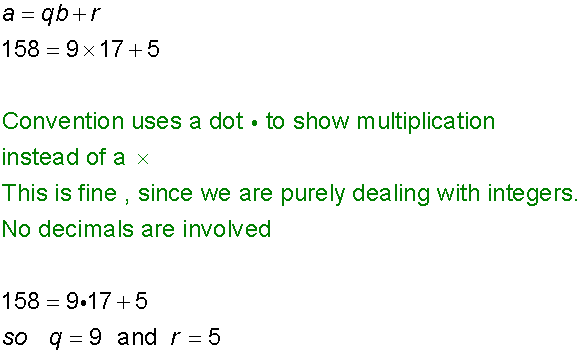
The Euclidean Algorithm
This uses the division algorithm to:-
- find the greatest common divisor (gcd)
[ aka highest common factor (hcf)]
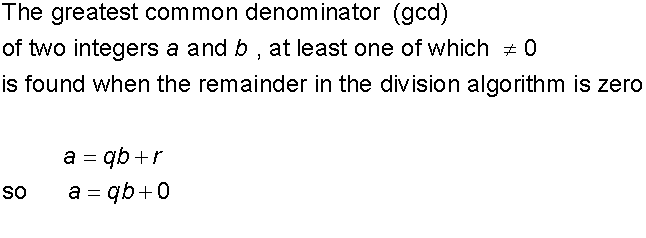
- find the lowest common multiple (lcm) of two numbers

- reduce a fraction to its simplest form
(just divide top and bottom by the gcd)
- find relatively prime (coprime) integers
These occur when the gcd (a,b) = 1
- Solve equations of the form
gcd (a,b) =ax +by
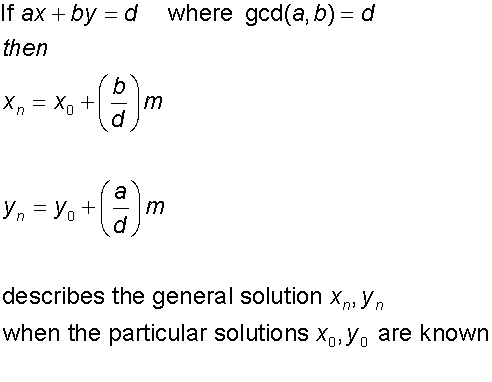
Example
Find the gcd of 135 and 1780
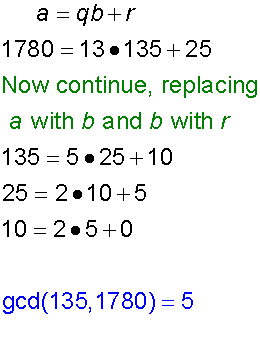
Example
Find the lcm of 135 and 1780
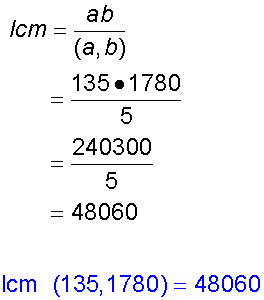
Example
Reduce the fraction 1480/128600 to
its simplest form
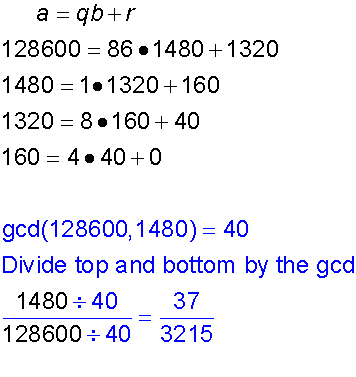
Example
Show that 34 and 111 are co prime
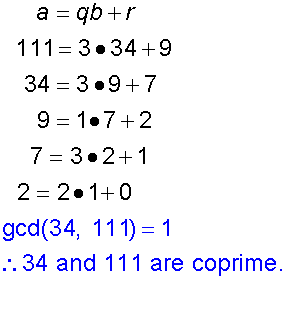
Example
Solve 34x + 111y = 1 ,
where x and y are integers
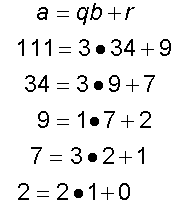
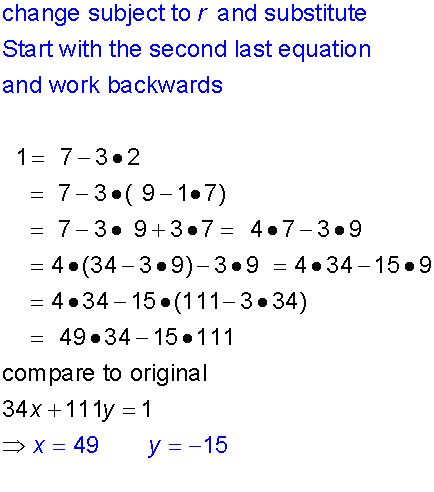
Diophantine Equations
These are of the form

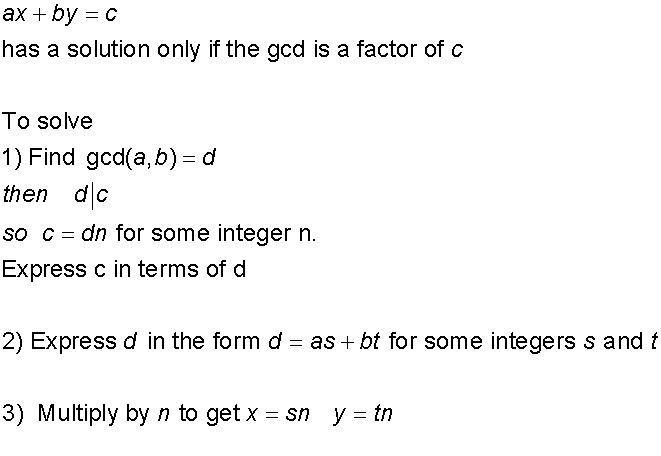
Example
Solve the linear Diophantine Equation
69x +27y = 1332, if it exists
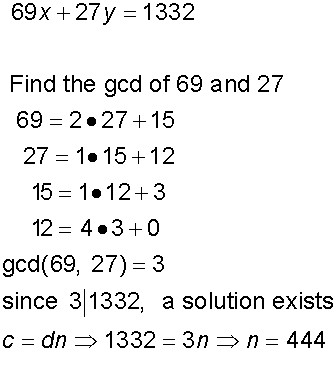
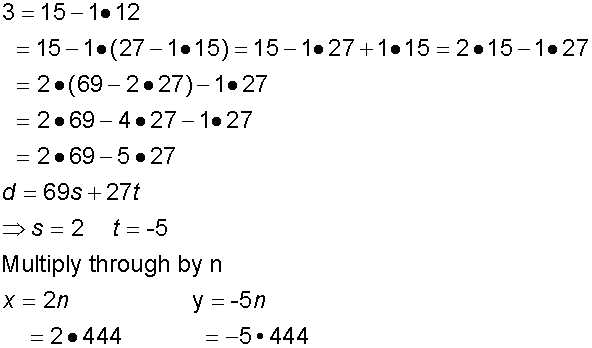
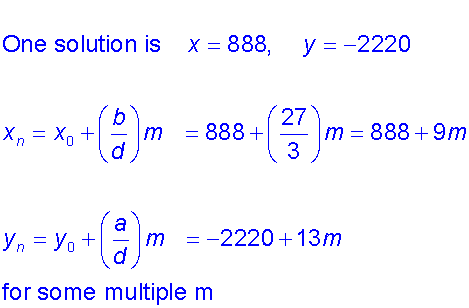
Example
Find the positive integer values of x and y that satisfy
69x +27y = 1332
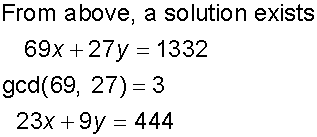
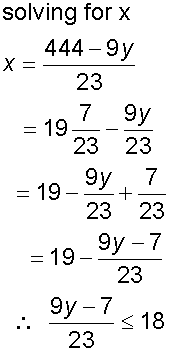
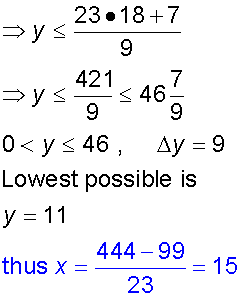
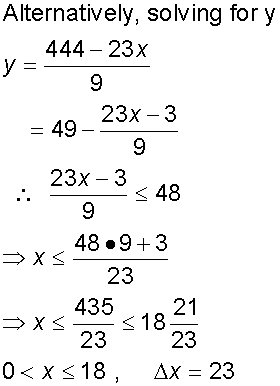
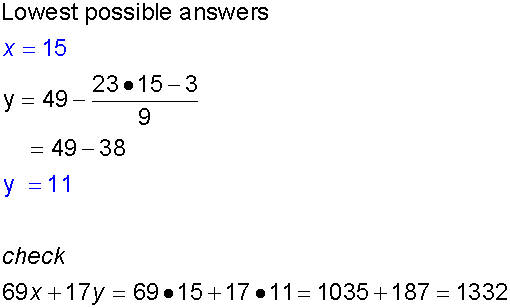
Pythagorean Triples
![]()
To find these,
Pick an odd positive number
Divide its square into two integers which are
as close to being equal as is possible
e.g. 72 = 49 = 24 + 25
gives triples 7, 24, 25
72 + 242 = 252
Alternatively, pick any even integer n
triples are 2n , n2- 1 and n2 + 1
e.g. picking 8 gives 16, 63 and 65
Indeed 162 + 632 = 652
Fermat’s LastTheorem

Number Bases
To convert a number into a different base,
use the Division Algorithm , taking b as the
required base.
Example
Convert 36 into binary
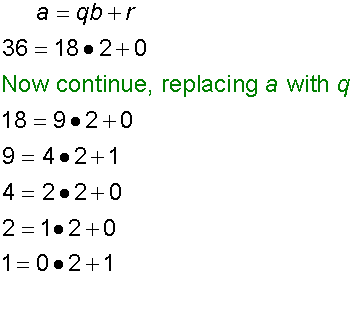
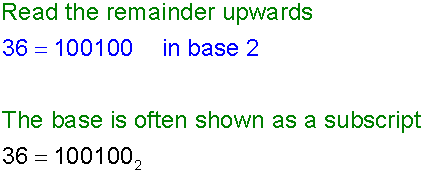
Example
Convert 36 into hexadecimal
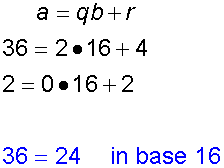
Example
Convert 503793 into hexadecimal
( Remember that hexadecimal uses letters)
